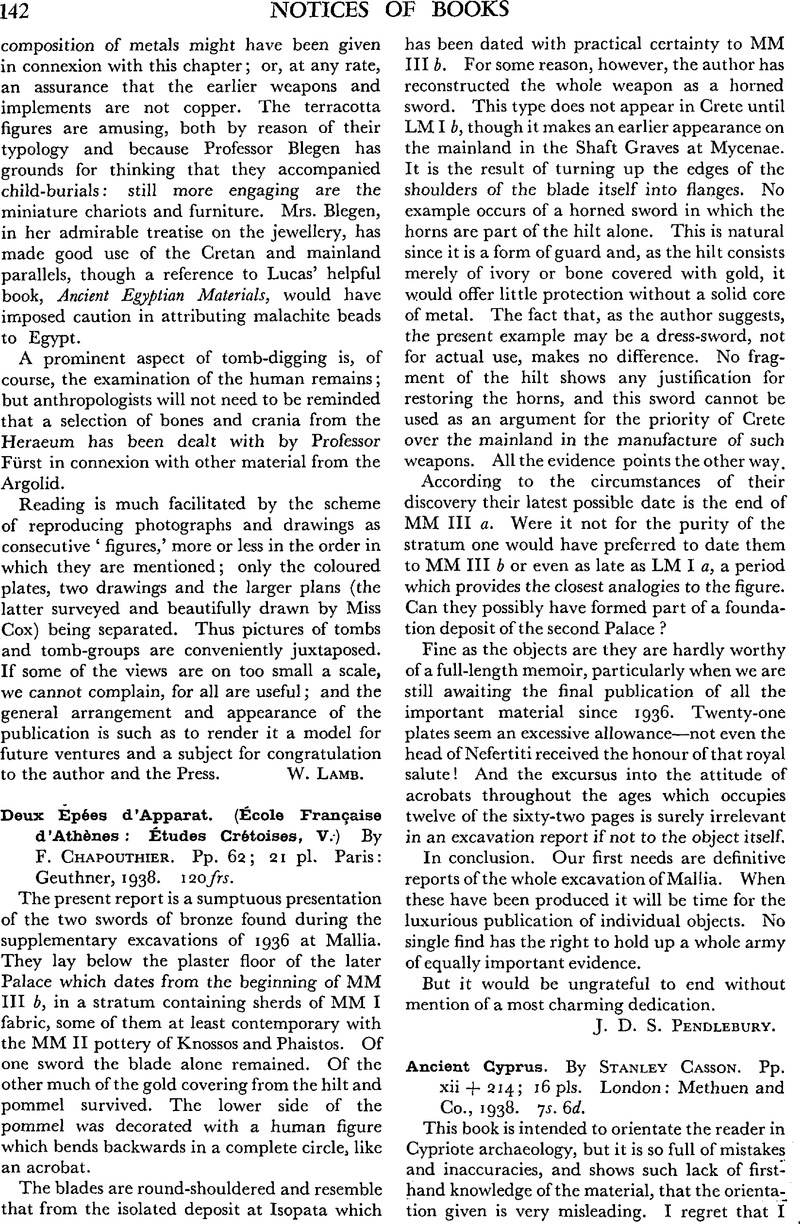No CrossRef data available.
Article contents
Ancient Cyprus. By Stanley Casson. Pp. xii + 214; 16 pls. London: Methuen and Co., 1938. 7s. 6d.
Published online by Cambridge University Press: 23 December 2013
Abstract

- Type
- Notices of Books
- Information
- Copyright
- Copyright © The Society for the Promotion of Hellenic Studies 1939
References
page 143 note 1 Swed. Cyp. Exp. i, pp. 1 ffGoogle Scholar. Casson mentions this site as Neolithic (pp. 21 f.); his statement above is therefore the more surprising.
page 143 note 2 Op. cit., pp. 13 ff.
page 143 note 3 Op. cit., pp. 277 ff. The excavations at Lapithos and Kythrea are also mentioned by Casson (p. 22), but on account of his defective knowledge of the material he has not observed they are Neolithic.
page 143 note 4 Stud. on Preh. Cyp. pp. 19 ff.
page 143 note 5 Swed. Cyp. Exp. i, pp. 356 ff.Google Scholar
page 143 note 6 Stud. on Preh. Cyp. p. 333.
page 143 note 7 E.g., the typical White Slip pottery is said not to precede the Mycenaean ware of the Amarna type (p. 41), but cf. Stud. on Preh. Cyp. pp. 277 ff.
page 143 note 8 E.g., Tomb 5 from Amathus (p. 65), cf. Swed. Cyp. Exp. ii, p. 26Google Scholar.
page 143 note 9 E.g., the characteristic pottery of the ‘circle style’ is assigned to the beginning of the Geometric period (p. 159), but it does not appear before the end of that period and is common in the Archaic period; the ‘Red Bucchero’ class, which is said to be common 1000–800 B.C. (p. 132), is not earlier than 850 B.C. and is not common earlier than 700 B.C., etc.
page 143 note 10 P. 172: The barrel-shaped vases which appear already in Cypro-Geometric I are supposed to have developed from the ‘bird-oinochoai,’ which are Archaic.
page 143 note 11 Swed. Cyp. Exp. ii, pp. 460 ff.Google Scholar; 642 ff.; iii, pp. 1 ff.
page 143 note 12 Op. cit. ii, pp. 625, 627 f.
page 143 note 13 Jeffery, , Historic mon. of Cyp. p. 382Google Scholar; Swed. Cyp. Exp. iii, pp. 579 f.Google Scholar
page 143 note 14 Die Antike, ix, 274Google Scholar: Acta Inst. Rom. Regni Suec. ii, p. 150Google Scholar; Swed. Cyp. Exp. iii, p. 286Google Scholar.
page 144 note 1 Strabo, xiv, pp. 5, 17.
page 144 note 2 Swed. Cyp. Exp. ii, pp. 813 ff.Google Scholar
page 144 note 3 Die Antike, ix, pp. 270 ff.Google Scholar; cf. AA, 1936, pp. 561 ff.
page 144 note 4 Westholm, , The Temples of Soli, Stockholm, 1936Google Scholar.




